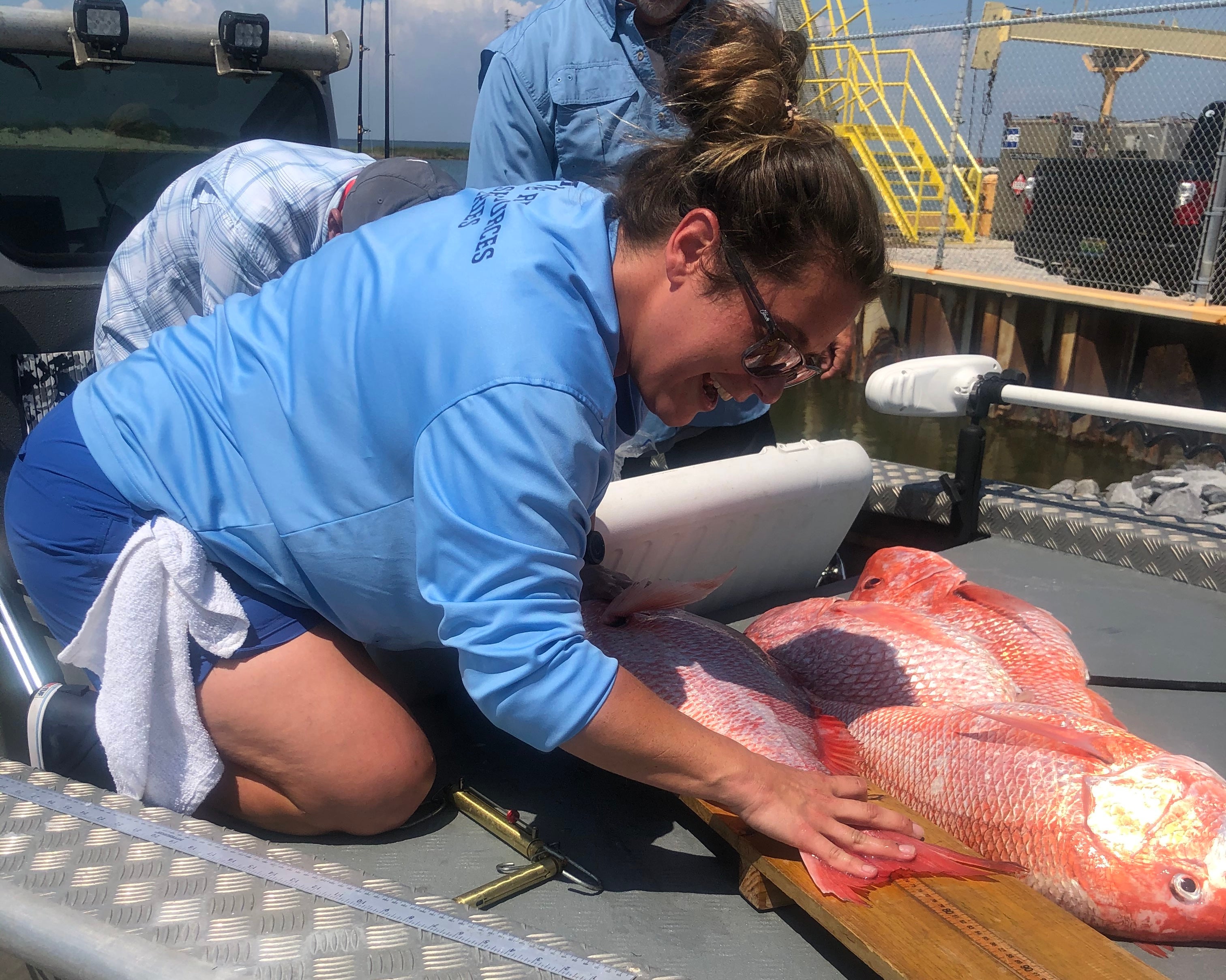NOAA Fisheries and Partners Announce Improvements to Recreational Fishing Data Collection Ahead of Red Snapper Season
Red snapper season is approaching. Field samplers with the Alabama Department of Conservation and Natural Resources (ADCNR) will be deploying tablet-based data collection and submission as part of the state’s Snapper Check program.
“This switch to tablet-based data collection from paper streamlines our process and results in the availability of more timely data,” said Kevin Anson, ADCNR, Marine Resources Division, chief marine biologist. “This also improves our quality control process, which leads to better data. Samplers will be able to more efficiently collect information from recreational anglers, which, in turn, will increase the number of interviews conducted per assignment.”
Currently, Snapper Check collects catch and effort information from owners and operators of state for-hire vessels and private recreational fishing vessels who possess red snapper, gray triggerfish, or greater amberjack. It consists of two complementary components:
- Electronic reporting system in which anglers provide catch and harvest information for these species after each fishing trip
- Dockside survey to gather trip information, as well as length and weight measurements from landed fish
NOAA Fisheries provided funding for development, testing, and implementation of the tablet-based dockside interviews. The effort received additional support from the Gulf States Marine Fisheries Commission’s Fisheries Information Network.
NOAA Fisheries encourages the consideration and use of electronic technologies to complement or improve fishery-dependent data collection programs, where applicable.
“We are committed to working with our partners to develop sound electronic reporting tools and advance the appropriate use of electronic reporting technologies to improve our program,” said Katherine Papacostas, NOAA Fisheries, Marine Recreational Information Program branch chief.
A key part of MRIP is the support provided to partners.
“We work closely with our state and regional partners to help them meet data collection needs within their unique recreational fisheries,” said Papacostas. “This includes access to technical resources, statistical support, and funding.”
In 2018, NOAA Fisheries certified the design of Alabama’s Snapper Check. That means it was found to be a statistically valid approach for monitoring of red snapper catches with respect to annual catch limits. As part of the certification process, NOAA Fisheries provided technical support and facilitated a peer review with expert consultants, including independent academia and statistician professionals. Certification is the first critical step for the potential incorporation of any new survey data and estimates into the federal fisheries assessment and management process. Snapper Check is just one of several Gulf of Mexico surveys developed by the states with assistance from NOAA Fisheries.
“Sustainable fishing starts with the data,” said Gregg Bray, GulfFIN program coordinator. “We are continuously working with our partners to find ways to advance and streamline our data collection methods. The successful implementation of this project underscores the importance of our federal, regional, and state partners working together to evaluate and improve recreational fishing data.”
###






